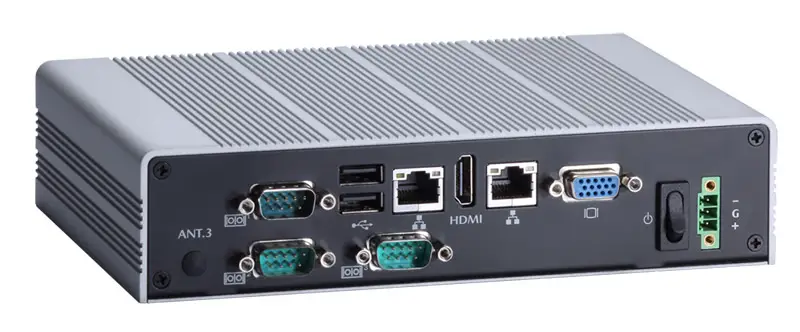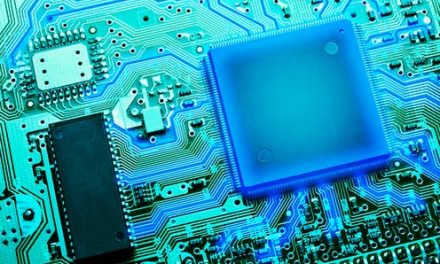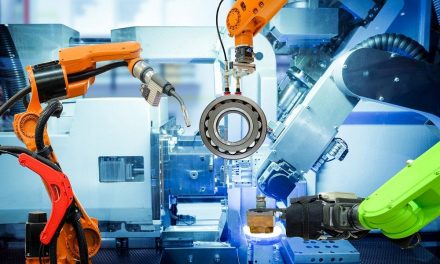When one hears the term Computer, what immediately comes to mind is a laptop, or a desktop. There are however, other types of computers, and in this article we will learn more about the embedded computer.
Table of Contents
Definition of the Embedded Computer
What is an Embedded Computer? An embedded computer is defined as a purpose-built computing platform that is designed to accomplish a specific software-controlled task. These computers are usually made to be part of a larger system.
Just think for a moment. What controls your microwave? What about your washing machine? Your Calculator? It is an embedded computer! As you can see, these embedded computers form the key role in most embedded systems. They are designed to accomplish a highly specific function.
A simple example of this is the embedded computer present in a microwave. This embedded computer will be designed to accomplish tasks such as controlling the temperature in the oven, controlling the timer which indicates when the food is ready, and checking whether the oven door is open or not through the use of sensors present in the body of the microwave.
As you can see, the type of software used by the embedded computer in the microwave definitely cannot be the same as that used in a Calculator. These two devices are designed and developed to accomplish tasks that are completely different. As a result, the software in one embedded computer can be completely different from that used in a different embedded computer with a different application.
During the process of designing embedded computer systems, the application of the embedded computer is given a great deal of attention. In this stage, the hardware is selected, based upon the application of the system, e.g. the embedded computer located inside a motor vehicle’s engine must be able to withstand high temperatures. It is quite usual to see these embedded computers being situated in hardened containers in order for them to survive harsh environment conditions like vibration, dust, extreme temperatures and humidity.
Comparison of the Embedded Computer and the Desktop Computer
The key distinction between the embedded and the desktop computer are the design and purpose. The embedded computer, as explained in the definition, is designed for a specific purpose. It is designed and developed to accomplish one task and one task only. They are able to tolerate harsh conditions, and run at a maximum capacity using very little resources. It is not possible to do all this using the Desktop computer as these generally do not withstand harsh conditions, and they use a great deal of resources such as electricity, memory and space.
A second critical difference between the two is that desktop computers have motherboards which usually allow the client to add or replace components. Embedded computers, however, contain all of the components placed on a Printed Circuit Board (PCB), and they usually are not user serviceable.
Main characteristics of Embedded Computers
- The main purpose of the embedded computer system is not generic, but it is specific.
- In general, embedded computers are constructed in parts. They usually consist of a single PCB board that is placed within an embedded system.
- The set of instructions that run the embedded computer system is not stored in secondary storage such as the disc drive, but rather in the Read Only Memory (ROM).
- Embedded computers communicate with the environment through the use of peripherals.
Advantages of the Embedded Computer
Power Efficiency
Some applications need embedded computers to remain on, day and night. The embedded computer manages to run using minimum power consumption with ease. This is due to the fact that they are designed with lightweight and tailor made software that maximizes efficiency. In addition, there are embedded computers that do not require fans and do not contain any moving components. As we all know, a fan contains a tiny electric motor which draws a notable amount of current. In the absence of it, the power consumption is reduced.
Reliability
Embedded computers are used in medical and military applications. These applications require high reliability. The embedded computer is able to provide this reliability, being able to operate for 24 hours a day, 7 days a week in harsh environments such as very dusty areas, rugged terrains, and extreme temperatures.
Small Form Factors
Embedded computers use small form factor boards. The innovative designs of the enclosure and the highly advanced cooling systems allow them to remain small. Most of embedded computers used for industrial applications are fan-less. This means they rely only on thermodynamic principles. As a result they have the capability of cooling down in the absence of big enclosures and fans.
Disadvantages of the Embedded Computer
Challenges with configurations
Once the embedded computer is developed, it is difficult to change the configuration of both the hardware and the software. Remote update of the software is only possible if this feature was present in the design. If not, then any type of update will need to be done on-site. As a result, it is of great importance to do proper requirement analysis before the system is deployed.
Scalability issues
Due to the difficulty in changing the configuration, and embedded computer system cannot easily adapt to the demand present. This means that during the design system, the embedded computer system must be designed to adapt to the demand present, and have expansion ports to facilitate this.
Hardware limitation
Most embedded computer systems have very limited memory. In addition, the speed is also limited to some cases.
Single purpose application
The embedded computers are designed to do one task, and one task only. This means if there is a need to repurpose the system, this will result in a complete overhaul of the system. The hardware will have to be changed as well as the software.
Examples of devices which use embedded computers
Motor Vehicles, Digital Cameras, Automatic Washing Machines, and Industrial Robots.
Conclusion
Well that brings us to the end of the article. To summarize, the definition of the embedded computer was given, key features associated with the embedded computer were listed and the advantages as well as the disadvantages were given.
I hope you learnt something new!





